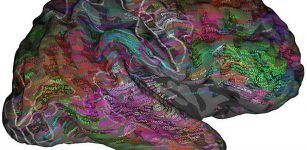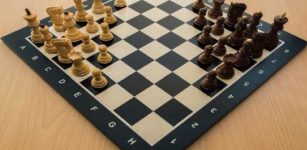Ninio’s Extinction Illusion – You Can Never See All 12 Dots At Once
Cynthia McKanzie – MessageToEagle.com – We all know that optical illusions are deceptive or misleading to our brains. What our eyes see is proceed by the brain, but the gathered information doesn’t always correspond with reality. What we sometimes see is far from the image.
Created by French scientist Jacques Ninio and first detailed in a paper published in 2000, Ninio’s extinction illusion represents an example of the limits of our vision. The illusion is a riff on the Hermann grid and features 12 dots on a grey and white grid. The problem is that no matter how much we try we can never see all 12 of the dots at once. The best an average person can see are four dots at one time.
This is because the grid prevents us from seeing the whole picture. If we removed the grid we could see all 12 dots, but when presented on a grid, our perception changes entirely.
“When the white disks in a scintillating grid are reduced in size, and outlined in black, they tend to disappear,” Ninio explained in the study.
“One sees only a few of them at a time, in clusters which move erratically on the page. Where they are not seen, the grey alleys seem to be continuous, generating grey crossings that are not actually present.
Some black sparkling can be seen at those crossings where no disk is seen. The illusion also works in reverse contrast,” he added.
See also:
Your Age Affects How You See Optical Illusions – What Do You See When You Look At This Illusion?
Bizarre Strange-Face Illusion – A Scientific Mystery
Dancing Snakes – The Illusion Our Brain Wants Us To See
“Our visual system is lazy. Regular patterns are tempting because you can look at a small portion and think you have the whole thing figured out,” Martinez-Conde, a neuroscientist at the State University of New York’s Downstate Medical Center told Popular Science. “Regular patterns are tempting because you can look at a small portion and think you have the whole thing figured out.”
According to scientists, humans have more neurons in the center of their vision than the outside.
This means we can only see things within a certain range of the center of our vision.
Like the Hermann grid, Ninio’s extinction illusion demonstrates how our brain compensates for what we cannot see.
As a result, our brains try to compensate for our peripheral vision by ‘filling in the blanks’ for what it thinks it sees.
Written by Cynthia McKanzie – MessageToEagle.com Staff Writer
Related Posts
-
 Spectacular Photos Of Mount Etna’s Eruption: Fire And Light In The Sky Over Sicily
No Comments | Dec 5, 2015
Spectacular Photos Of Mount Etna’s Eruption: Fire And Light In The Sky Over Sicily
No Comments | Dec 5, 2015 -
 US Scientists Have Mapped Out How The Brain Organizes Language
No Comments | May 2, 2016
US Scientists Have Mapped Out How The Brain Organizes Language
No Comments | May 2, 2016 -
 Boys At Risk Of Psychopathy Do Not React To Laughter As Other Children Do
No Comments | Dec 3, 2017
Boys At Risk Of Psychopathy Do Not React To Laughter As Other Children Do
No Comments | Dec 3, 2017 -
 Unexplained Mystical Structure: Egyptian ‘Ankh Cross’ Temple Built By The Aztecs?
No Comments | Apr 15, 2017
Unexplained Mystical Structure: Egyptian ‘Ankh Cross’ Temple Built By The Aztecs?
No Comments | Apr 15, 2017 -
 Is Transhumanism Worth Striving For?
No Comments | Mar 24, 2019
Is Transhumanism Worth Striving For?
No Comments | Mar 24, 2019 -
 New Version Of Chess Invented – Pieces Move Diagonally Across The Game Board
No Comments | Mar 5, 2021
New Version Of Chess Invented – Pieces Move Diagonally Across The Game Board
No Comments | Mar 5, 2021 -
 Magnificent Hattusha: Capital Of The Hittites
No Comments | Mar 17, 2016
Magnificent Hattusha: Capital Of The Hittites
No Comments | Mar 17, 2016 -
 Does The Climate In Game Of Thrones Make Sense?
No Comments | Jun 21, 2019
Does The Climate In Game Of Thrones Make Sense?
No Comments | Jun 21, 2019 -
 Is There Anything I Can Do To Keep My Brain Healthy In Older Age?
No Comments | Feb 14, 2016
Is There Anything I Can Do To Keep My Brain Healthy In Older Age?
No Comments | Feb 14, 2016 -
 New Controversial Evidence – Ancient Chinese Visited America 2,500 Years Ago
No Comments | May 9, 2015
New Controversial Evidence – Ancient Chinese Visited America 2,500 Years Ago
No Comments | May 9, 2015

